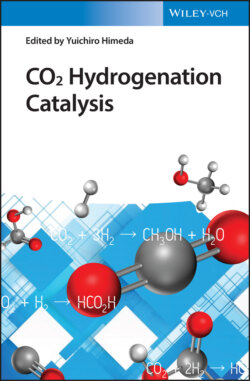Читать книгу CO2 Hydrogenation Catalysis - Группа авторов - Страница 17
1.3.4 Energy Storage
ОглавлениеThe two most growing renewable energy sources, solar and wind, are intermittent and thus provide highly fluctuating electrical energy. In addition, the region's best suited areas for the production of renewable energy are often far from consumption areas, i.e. cities. These cause the two key problems of storage and transport. Certainly, electrical energy is an effective way to transfer energy within 1000 km and can be stored in batteries. However, low‐cost solutions for the large‐scale storage and long‐range transport of electrical energy must be developed to improve energy security and balance energy prices.
The transformation of excess renewable energy into chemical energy by converting CO2 is one promising option. CO2‐based compounds, such as methane, methanol and formic acid, can store energy as gas or liquids with comparably high‐energy densities. Especially liquids can be easily transported and release energy as H2 or electricity through oxidation and fuel cells when there is a greater demand. In other words, CO2 can act as an energy vector between electrical and chemical energy. Recently, the electroreduction of CO2 to chemical fuels has been receiving increasing attention because it allows for the direct use of renewable electricity without conversion to high‐cost H2 by water electrolysis (see Chapter 9). Much more CO2 is in demand as a feedstock for fuels than for chemicals and mineralization. In addition, related photo‐catalytic processes gain more and more interest.
